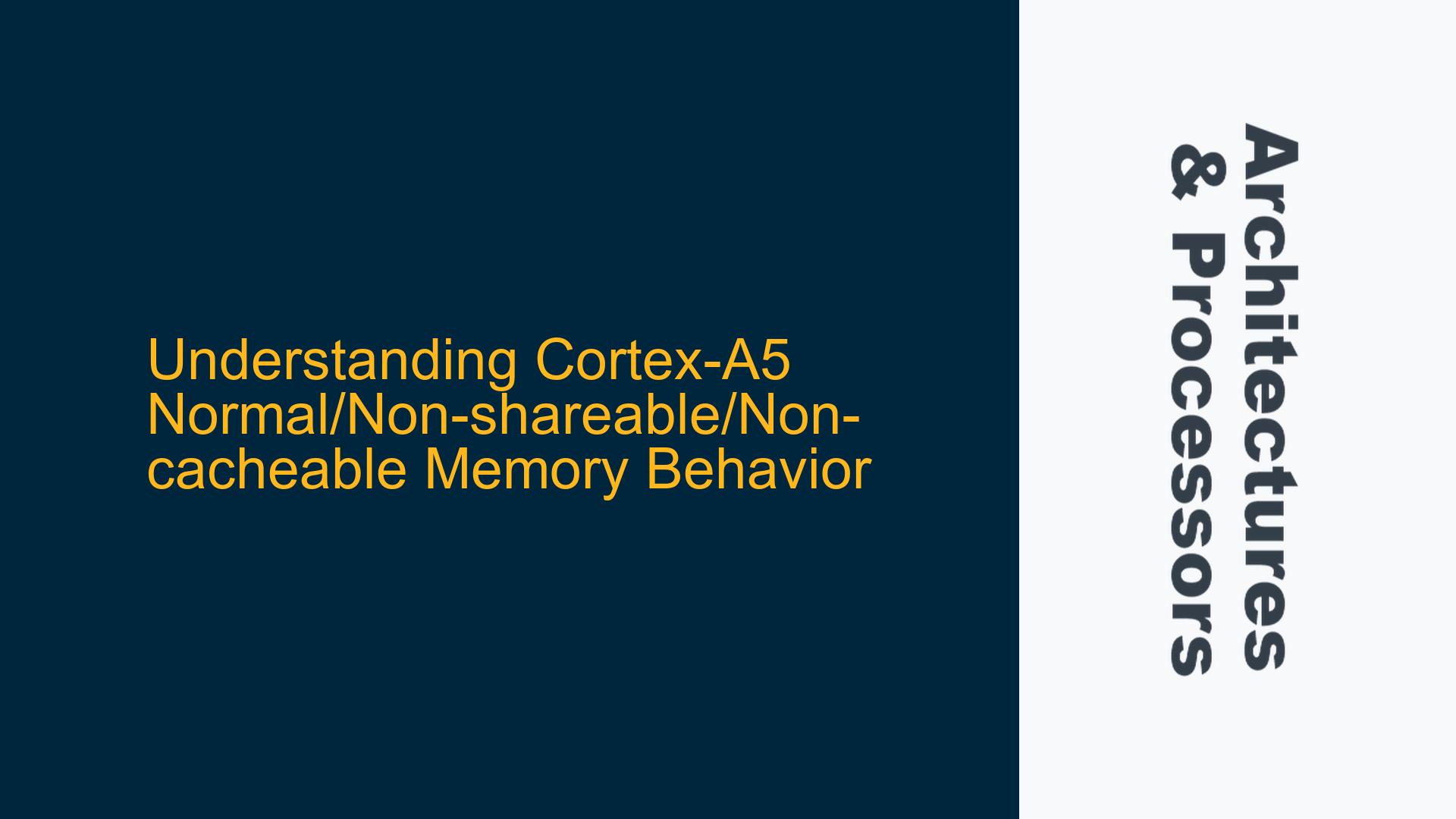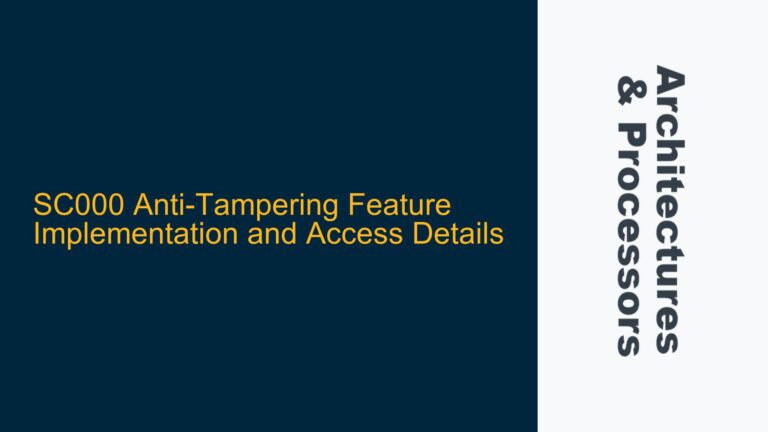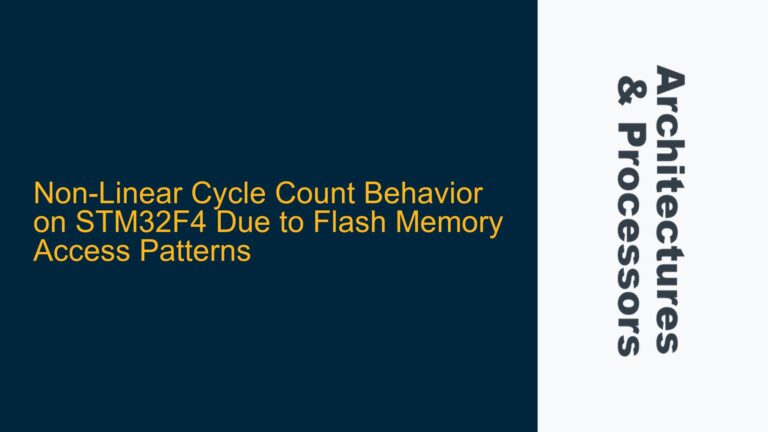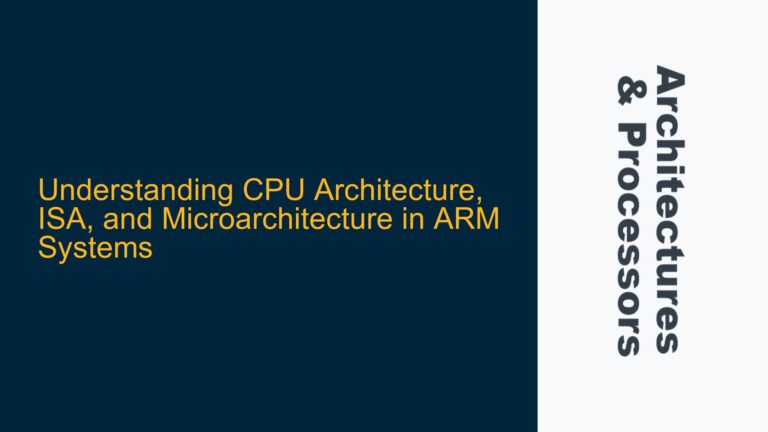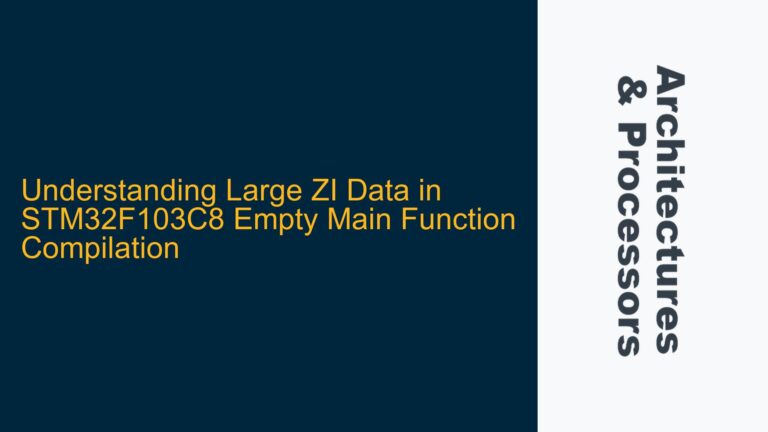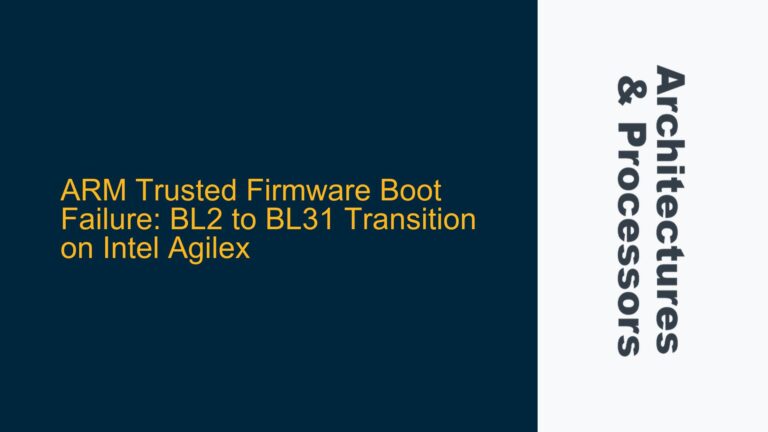ARM Cortex-A5 Normal/Non-shareable/Non-cacheable Memory Access and L1 Cache Bypass
The Cortex-A5 processor, like many ARM cores, provides a sophisticated memory system that allows developers to configure memory regions with different attributes to optimize performance and ensure correct behavior in multi-core or multi-master systems. One such configuration is the use of Normal/Non-shareable/Non-cacheable memory attributes. The Technical Reference Manual (TRM) for the Cortex-A5 includes a note stating that memory accesses with these attributes "do not access L1 caches." This behavior is critical to understand for developers working on low-level firmware, drivers, or operating systems, as it directly impacts system performance, data consistency, and synchronization.
Normal memory in ARM terminology refers to memory that can be reordered, buffered, or optimized by the system, as opposed to Device memory, which has strict ordering requirements. Non-shareable memory is private to a single core or master, meaning it does not require coherency management with other cores or masters. Non-cacheable memory, as the name suggests, bypasses the cache entirely, ensuring that every access goes directly to the main memory.
The note in the Cortex-A5 TRM regarding L1 cache bypass for Normal/Non-shareable/Non-cacheable memory is significant because it clarifies how the processor handles such memory accesses. Specifically, it indicates that even though the memory type is Normal, the Non-cacheable attribute forces the access to bypass the L1 cache entirely. This behavior is distinct from other memory configurations, such as Normal/Cacheable memory, where data would be fetched from or written to the L1 cache.
Understanding this behavior is essential for developers who need to ensure data consistency, especially in scenarios where DMA (Direct Memory Access) or other bus masters are involved. For example, if a DMA controller is writing to a memory region marked as Normal/Non-shareable/Non-cacheable, the processor accessing that region will not see stale data from the L1 cache, as the cache is bypassed entirely. This can simplify synchronization but may also impact performance, as every access incurs the full latency of main memory.
Memory Attribute Configuration and Cache Hierarchy Implications
The Cortex-A5 memory system is highly configurable, allowing developers to define memory regions with specific attributes through the Memory Protection Unit (MPU) or Memory Management Unit (MMU). These attributes include cacheability, shareability, and memory type (Normal or Device). The interaction between these attributes and the cache hierarchy is complex and can lead to subtle issues if not properly understood.
When a memory region is marked as Normal/Non-shareable/Non-cacheable, the processor treats it as follows:
- Normal: The memory system can reorder or buffer accesses to improve performance, but it must maintain the appearance of program order.
- Non-shareable: The memory region is private to the core or master accessing it, meaning no coherency operations are required with other cores or masters.
- Non-cacheable: The memory region bypasses the cache entirely, ensuring that every access goes directly to the main memory.
The note in the Cortex-A5 TRM stating that such memory accesses "do not access L1 caches" is a direct consequence of the Non-cacheable attribute. Even though the memory type is Normal, the Non-cacheable attribute overrides any potential caching behavior, forcing the access to bypass the L1 cache. This behavior is consistent with the ARM architecture’s handling of Non-cacheable memory but can be counterintuitive for developers accustomed to other architectures or configurations.
One common misconception is that Normal memory always implies cacheability. However, the Cortex-A5 (and ARM architectures in general) allows Normal memory to be either Cacheable or Non-cacheable, depending on the configuration. This flexibility is powerful but requires careful consideration to avoid performance pitfalls or data consistency issues.
For example, consider a scenario where a developer configures a memory region as Normal/Non-shareable/Non-cacheable for use as a DMA buffer. The intention might be to ensure that the DMA controller and the processor see the same data without requiring explicit cache maintenance operations. However, the developer must also be aware that every access to this region will bypass the L1 cache, potentially leading to higher latency and reduced performance compared to a Cacheable configuration.
Implementing Correct Cache Management and Synchronization Strategies
To effectively utilize Normal/Non-shareable/Non-cacheable memory on the Cortex-A5, developers must implement appropriate cache management and synchronization strategies. These strategies depend on the specific use case, such as DMA operations, inter-core communication, or peripheral access.
For DMA operations, the use of Normal/Non-shareable/Non-cacheable memory can simplify data consistency management, as the processor and DMA controller will always access the same physical memory location without requiring cache invalidation or cleaning. However, developers must also consider the performance impact of bypassing the L1 cache. In some cases, it may be more efficient to use Cacheable memory and explicitly manage cache coherency using ARM’s Data Synchronization Barrier (DSB) and Data Memory Barrier (DMB) instructions.
For inter-core communication, Non-shareable memory is typically not suitable, as it does not support coherency between cores. Instead, developers should use Shareable memory and ensure proper cache management to maintain data consistency. The Cortex-A5 provides hardware support for cache coherency through the ACE (AXI Coherency Extensions) interface, but this requires careful configuration and understanding of the memory attributes.
For peripheral access, Device memory is usually the preferred choice, as it provides strict ordering guarantees required for interacting with hardware registers. However, in some cases, Normal/Non-shareable/Non-cacheable memory may be used for peripheral buffers, especially if the peripheral supports scatter-gather DMA or other advanced features.
To implement these strategies effectively, developers should follow these steps:
- Define Memory Attributes Carefully: Use the MPU or MMU to configure memory regions with the appropriate attributes based on the use case. For DMA buffers, consider the trade-offs between Non-cacheable and Cacheable memory.
- Use Barriers for Synchronization: When using Cacheable memory, insert DSB and DMB instructions to ensure proper ordering and coherency. For example, after writing data to a DMA buffer, use a DSB instruction to ensure the data is visible to the DMA controller.
- Monitor Performance: Profile the system to identify performance bottlenecks related to memory access. If Non-cacheable memory is causing excessive latency, consider alternative configurations or optimizations.
- Leverage Hardware Features: Use the Cortex-A5’s cache coherency and memory system features to simplify development and improve performance. For example, use the ACE interface for inter-core communication or the TCM (Tightly Coupled Memory) for low-latency access to critical data.
By understanding the Cortex-A5’s memory system and implementing these strategies, developers can optimize performance, ensure data consistency, and avoid common pitfalls related to memory attribute configuration and cache management.
